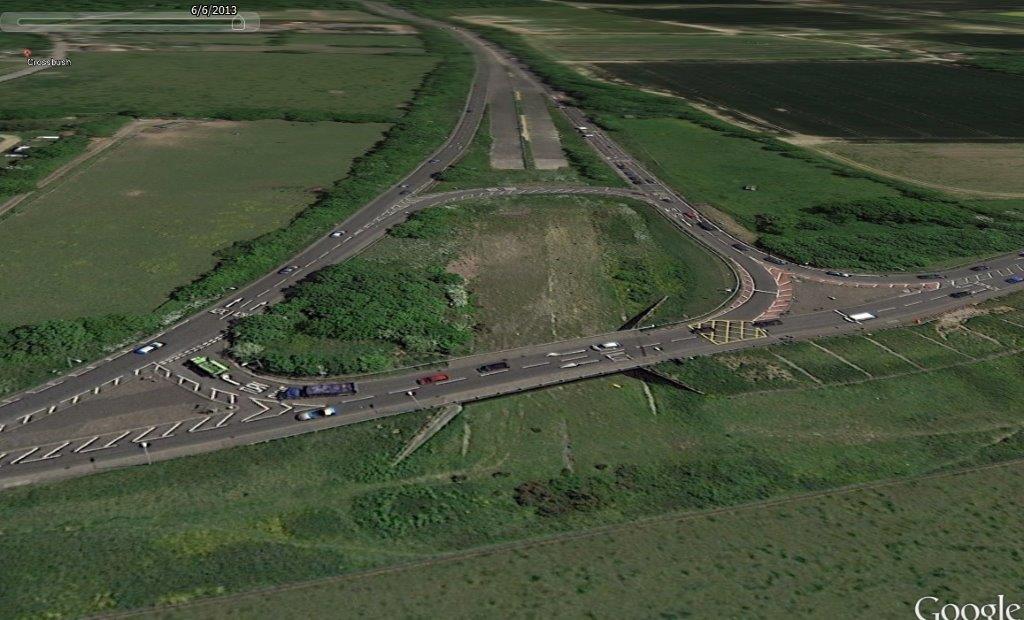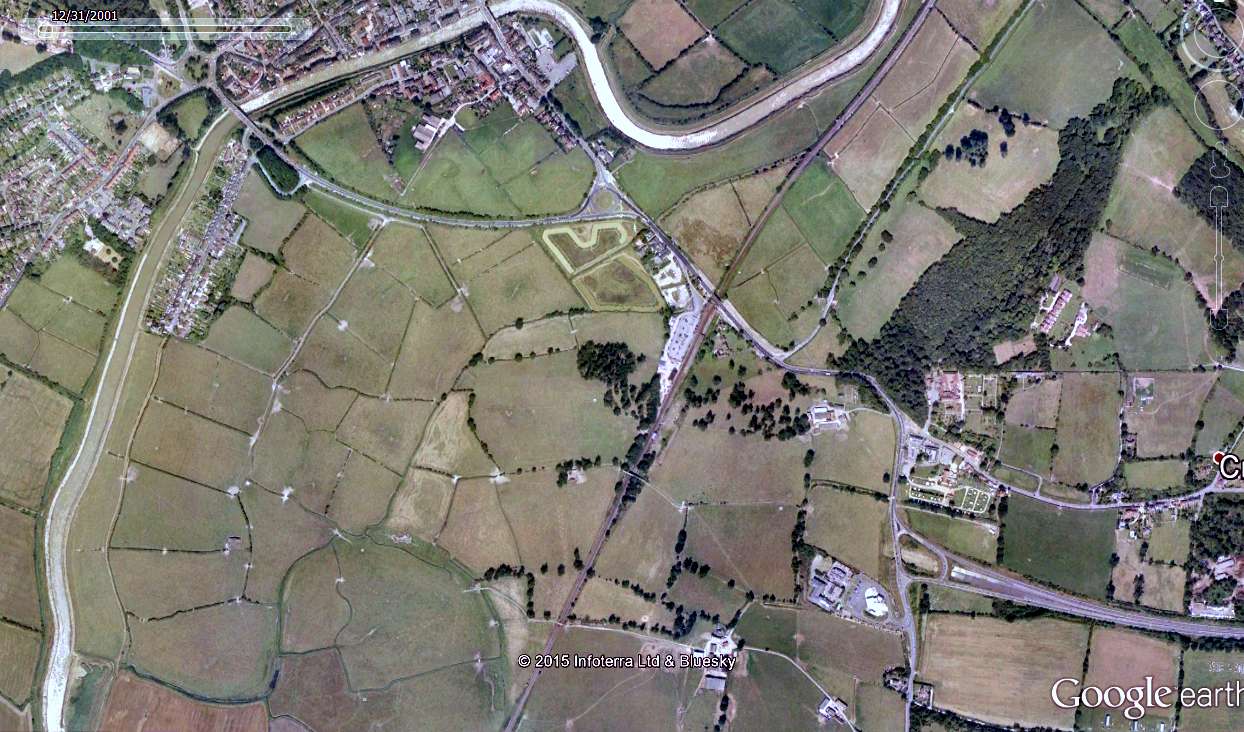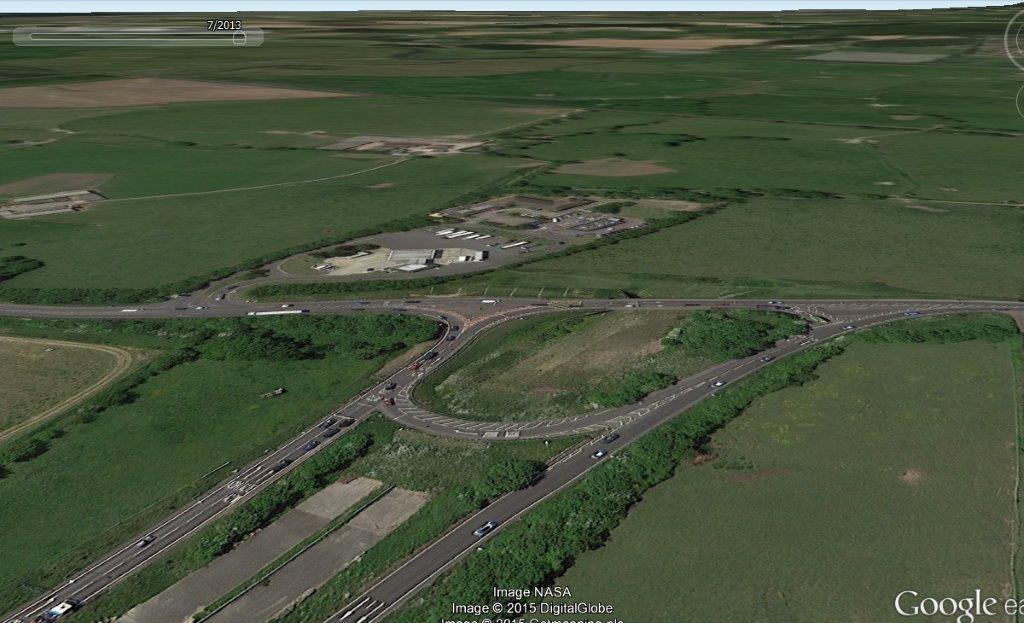How deep is Minister John Hayes' commitment to Beauty?
On 4 February, the Rt Hon John Hayes MP, Minister of State for Transport, gave a speech titled ‘Beautiful roads’ at an event hosted by Campaign to Protect Rural England (CPRE) and Campaign for Better Transport (CBT). It contains this promising phrase:
“Our goal is not just to undo the most intrusive, insensitive road design of the past 50 years….”
If he means what he says, the Crossbush junction on the A27 at Arundel is a prime candidate for demolishing and rebuilding. I suggest that the Crossbush junction – and the Crossbush bypass – are good examples of “the most intrusive, insensitive road design of the past 50 years”.
The Crossbush junction is half of an uncompleted ‘dumbbell’ junction. It is known locally as ‘the diving board’ since it raises the A27 (going westwards) and then stops, turning into a T-junction with lights, with both arms of the T becoming a single carriageway road, one going down to Arundel. The intended A27 dual carriageway is an unused strip of tarmac which ends in a bank under the junction.

The Crossbush bypass should really have been treated as part of the (unbuilt) Arundel bypass which it would adjoin. In other words, it should not have been built unless and until an acceptable route for a bypass at Arundel was found. But the Crossbush bypass was built in the 90s, and stands as a monument to human folly – ‘expecting’, or encouraging, a completion with an Arundel bypass which cannot be built because it is too environmentally damaging.
Two offline bypass alternatives at Arundel were suggested by the recent A27 Study. All offline routes would cross the Arundel watermeadows, then bisect Tortington village, south of Arundel. One, the previous Preferred Route, then goes through much-loved and nationally protected woodland (Tortington Common, part of the South Downs National Park), the other through the villages of Binsted and Walberton. Neither road would be beautiful. Instead both would be terribly destructive.

The Crossbush junction stands at the eastern side of the Arun valley, a floodplain with small fields and hedges, described by a previous Secretary of State, Alistair Darling, as of ‘outstanding beauty’ when he cancelled the Arundel bypass in 2003 (the Preferred Route through Tortington Common). Even as it is, without the Arundel bypass, the junction is looming, high, ugly, inappropriate, and has brought the inevitable large service station and fast food outlet, themselves a blot on their beautiful surroundings.

The best way to improve the ugliness of the junction would be to demolish it and replace it with an at-grade roundabout, accepting that a dual carriageway across the Arun valley watermeadows, through Tortington, and then through either the National Park woods or two more villages, is not appropriate or possible and could not be ‘beautiful’. Such a plan would represent a commitment to protecting what is truly beautiful. The looming ‘diving-board’ would disappear and the monument to human folly would become a story of the attainment of wisdom.
Many local people do not want increased capacity on this road, leading to more traffic and further traffic jams, but would accept smaller-scale work to improve traffic flow. Some improvement of the A27, at a less intrusive scale, nearer to its current route, is possible without being as destructive as a completely offline bypass, and should be one of the options in the coming public consultation. The Crossbush bypass cannot be unbuilt, and the least damaging solution would be to join the A27 at Crossbush to the current Arundel bypass with a short section of new, non-dual-carriageway road passing south of Arundel station. This could be combined with the changes to the junction suggested above.
Let’s hope the Minister’s commitment to ‘undoing intrusive, insensitive road design’ will be strong enough to encompass this proposal.
Emma Tristram, resident of Binsted
